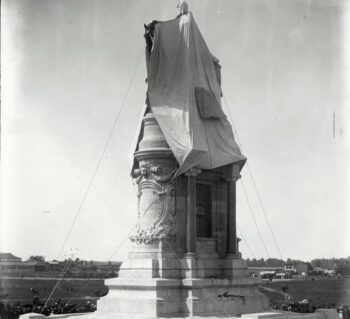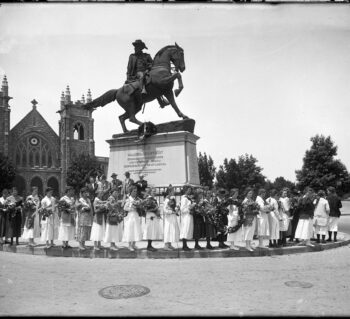
Search the Valentine Museum
27 results found for “"monument avenue"”

Featured Stories
Monument Avenue: Robert. E. Lee Monument
It took nearly twenty years to erect a monument to Robert E. Lee in Richmond, and it came down in less than two.

Featured Stories
Richmond’s Monument Avenue: Memorializing the Lost Cause Myth
Richmond’s Confederate monuments on Monument Avenue supported the Lost Cause myth and dominated the city’s monumental landscape more than 130 years.

Featured Stories
Monument Avenue: Thomas J. (Stonewall) Jackson Monument
The Thomas J. “Stonewall” Jackson Monument that went up on Monument Avenue in 1919 was the second sculpture to him in the City of Richmond.

Featured Stories
Monument Avenue: J.E.B. Stuart Monument
It took 42 years for the City of Richmond to unveil “a suitable monument and inscription” to James Ewell Stuart. The J.E.B. Stuart Monument stood in Richmond for 113 years.

Featured Stories
Monument Avenue: Jefferson Davis Monument
The United Daughters of the Confederacy were the main supporters of the Davis Monument and, in 2018, it was deemed the “most unabashedly Lost Cause in its design and sentiment.”

Featured Stories
Monument Avenue: Matthew Fontaine Maury Monument
In December 1912, nearly 40 years after Matthew Fontaine Maury (1806-1873) died, Richmonder Gaston Lichtenstein authored a letter to the editor that “the capital of his own State ought to take pleasure in erecting a statue to his memory.”

Teaching Resources
Primary Sources Related to the Lee Monument on Monument Avenue
Lesson Plan: Learn about the beginning of Monument Avenue through examining letters, maps, and newspaper articles from when the Lee Monument was created. These primary source documents, from the time period, allow us to see the monument from a variety of perspectives.



Featured Stories
Jefferson Davis Monument Cornerstone Box
The Jefferson Davis cornerstone box spent over a decade in Monroe Park and then almost 115 years buried on Monument Avenue, but its 1907 relocation doomed most of the contents.